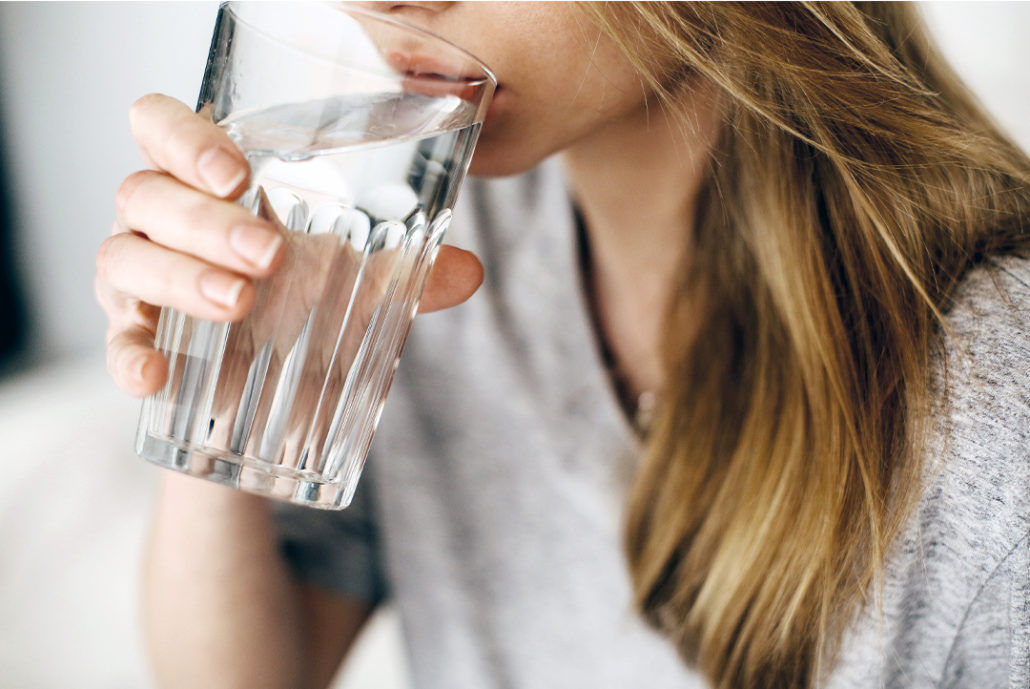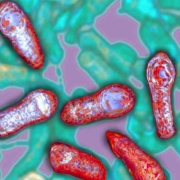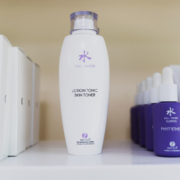Tap vs Bottled Water: The Chemicals in Tap Water
Tap water seems simple: turn on the tap and a stream goes right into your glass. Tap water is clear, flavorless, and odorless (perhaps a little chlorine scent but that’s nothing to worry about, right?). But when we think about tap water, we think that above all: it’s just water. But what if there is a lot more going on in everyone’s tap water, something that could be a source of potential harm in the fluid that comprises 60% of the adult body?
What are the real and potential contaminants in our tap water that you should know about if you are to live the healthiest life you can? Is bottled water better? And who exactly is to blame for all of this happening in something so vital as municipal water?
Read on to learn how water can be a source of vitality—alive just as you are alive!—and health if you take the appropriate measures. These measures are important as your drinking water can be a contributor to chronic health issues and even disease in the long term. You’ll learn how to better protect yourself and your loved ones by choosing better water sources and treating the water you already have.
What Contaminants are Typically in Tap Water?
Throughout the United States, tap water is generally considered to be safe, even if it might be frowned upon in social circles in favor of bottled water (we’ll get to the complications of bottled water, too!). And if “safe” is defined by a low-risk of acute toxicity or illness, then yes, tap water is almost always safe.
Tap water is evaluated by standards and guidelines, mostly from the federal government. You can check your own municipal water system right here, to get an overview of “the usual suspects” the last time it was tested. But is this definition sufficient?
There are two major groups of contaminants: those that are measured and regulated but the levels might be unsafe over the long term, and those that are not currently measured by most publicly accessible sources and could also be harmful in the long or short term.
Chlorine, Arsenic & Acrylamide
The first group contains things you’ve likely heard about, like chlorine and ammonia (used to treat many water systems) and arsenic (found in water sources from natural deposits or industrial waste). The officially recognized list of tested contaminants is just over 90 items.

The second group is a much longer list (with no standard definition of what should be on it!) that runs the gamut from endocrine disruptors to pharmaceutical residues to personal care products like shampoo and makeup. Even the EPA has a secondary list of human health water contaminants that are not all yet regulated but might be in the future.
The negative health effects that can result from these chemicals vary based on the dose, the person, and of course the substance. In just a brief sampling of what dangers we are up against, consult the chart on the EPA website for known effects of just the chemicals that have safety standards! Cadmium can cause kidney damage, beryllium contributes to intestinal lesions, thallium can cause hair loss or liver problems…. And the issues go on and on, as deeply as you’d like to dig into contaminants both known and unregulated.
Rather than continuing to focus on all of the potential ways that our water “is trying to kill us”, let’s look forward, beyond regulations and official limits. Fortunately, we don’t have to wait for the future if we take our water quality into our own hands. By choosing good sources and then ensuring that we are purifying and treating our water as the life-giving nutrient that it can be, we’ll be on the right track for a healthy and sound body.
Is Bottled Water Better than Tap Water?
If the potential issues with your tap water have you nervous, you might reach for a case of bottled water instead and think that everything is fine. Nothing could be farther from the truth. There are several ways in which bottled water can be detrimental to your health. We’ll start with the packaging itself, which is the key “X-factor” when it comes to risk. Plastic water bottles are mostly free of BPA at this point thanks to loud public outcry. But BPA is but one of dozens of similar additives that can be freely used in plastics.
The other common issue with bottled water is an unspoken one: many bottled waters (about ⅔) are actually just tap water from a municipal source, purified by the manufacturer (by undisclosed methods). Of course, that means everything we’ve already discussed here applies—because you do not know what kind of purification that Dasani has actually been through.
You’d be better off just properly treating and filtering your tap water rather than paying extra for bottled water.
How to Improve Your Tap Water Quality
It starts with an excellent filtration system. There are many options, from simple and basic to expensive and comprehensive. We’ll go from most common and simplest to most effective (and more complicated).
- Activated charcoal filtration (otherwise known as that plastic pitcher on your counter with the 3-month countdown timer). Charcoal filtration that BRITA became famous for removes some of the contaminants in drinking water, so it is definitely better than doing nothing. We’d strongly recommend you move up the chain to something like a purification system such as
- Reverse Osmosis. Highly effective at removing several items not covered by charcoal filters, such as arsenic, fluoride, nitrates, and perchlorate. However, these systems use a lot of water in order to “produce” drinking water. Due to this waste, it is recommended that you only use this process on cooking and drinking water rather than plants or showers.
- Distillation. The most natural and comprehensive way to purify tap water by reducing the water solution to only water molecules through boiling into steam and then capturing the steam back into water. Only the pure water molecules rise as steam and it is this that is the product of distillation. This solution can be time consuming but it is a good starting purification for your tap water, because you will be starting from a pure source. (Which you can then add back in vitality and structure, as you will see below!)
Healthy water is even more than just making sure that contaminants are removed when possible. This “blank slate” water is better than what is flowing freely from the tap, but it still lacks the properties that will be nourishing to your body. That’s where structured water comes in.
What is Structured Water?
Water has energy. Water is energy. How does this relate to purified and healthy water? Once you have removed contaminants from your tap water, is everything a-okay? Let’s be clear: you are starting from a much better place than from your basic tap water, but you can do much more for your health. Let’s talk about structured water.
Structured water will help you build a healthier life almost literally from the ground up. By realigning water molecules at the electromagnetic level, the process of restructuring water can promote a host of healthy effects in one’s body. Conventional water treatment processes can misalign your tap water’s molecules, and this is where the need for restructuring comes in. In limited amounts, your body can assist with restructuring through heat and even human touch, but with much of our commercialized water, we can do more.
Structured water can be created by a few different methods. One is using gems and crystals in direct contact with water to alter the electrons. This is covered in depth in our podcast interview with the founder of GemWater.
Water Is Life
Choose Natural and Vital Water
We believe that not only is water life, but choosing water that is supportive of human vitality is a choice you can make for your own health. There are many resources out there on the dangers of untreated and unpurified tap water, and rather than allow those to put you in a fatalistic state of mind, know that you have power.

You can bring water that is vital, structured, and ready to nourish your body into your glass. And when your body is nourished in this way—as well as by nutrients in food and the sustaining nourishment of social contact, sunshine, and human touch—it makes it so much easier to prevent and even mitigate chronic health issues that would disrupt your life and those of your loved ones. Everything is connected. We believe a nourished body is one that lives well, loves well, and as disease-free as possible. To your health!
Learn More about Water
Want to dive deeper into another way to bring water’s amazing power into your life? Have a listen to our podcast interview with Gem-Water founder Anjanette Sinesio for a compelling story about how you can use the inherent power of crystals to create healthier water for your body.
If you’re ready to do a little bit of reading and then some restorative upgrades to your water system, Radiant Life has you covered. Their resources on water health and purification are in-depth and some of the best online. And they make a variety of systems available to purchase, from tap and showerhead filtration to whole-house multi-stage solutions.
Disclaimer: The statements made in this article have not been evaluated by the Food and Drug Administration. Any products or treatments mentioned are not intended to diagnose, treat, cure, or prevent any disease. Please consult a licensed medical practitioner for medical advice.
At Innovative Medicine, we believe in transparency. We want you to know that we may participate in affiliate advertising programs pertaining to products mentioned herein.
See how we can help you restore complete health of body, mind & spirit.
Join our mailing list and receive exclusive offers + information!







Leave a Reply
Want to join the discussion?Feel free to contribute!